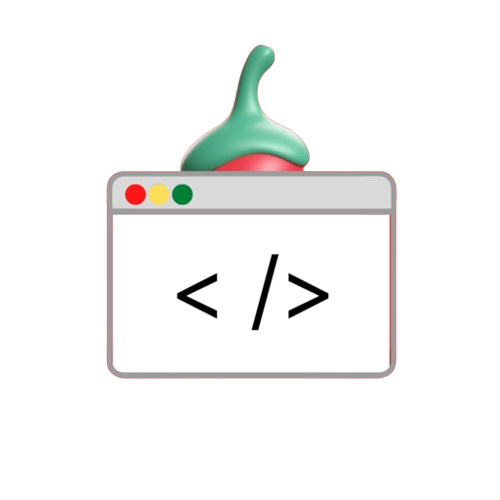Effective payroll management is essential for every business. And creating a simple payroll management website can improve the process. In this course We’ll walk you through how to create a dynamic payroll management website using basic web technologies like HTML, CSS, and JavaScript. You’ll learn basic JavaScript concepts by creating an engine that calculates and returns the minimum number of changes required in behavior management.
Project Overview
This project is for beginners who want to strengthen their understanding of JavaScript. We’ll start by creating HTML structure, apply CSS styles, and apply JavaScript logic to make the page interactive. Ultimately, you’ll have a comprehensive payroll management network. This works, which handles errors and returns the correct number of comments.
Prerequisites
Before starting this project Make sure you are satisfied with the following:
- ES6 JavaScript (especially functions and loops).
- Query options and DOM manipulation.
- Basic HTML and CSS.
Project Structure
- HTML: Defines the structure of the web page with input fields for the bill amount and customer cash payments.
- CSS: Add styles to make web pages look attractive.
- JavaScript: Includes logic for calculating the minimum number of comments for changes and debugging.
Step 1: Setting Up the HTML Structure
An HTML file consists of three main parts:
- Title: Displays the title of the web page.
- Data Entry Section: Contains two fields where the user can enter the bill amount and cash paid.
- Table: Shows the minimum number of banknotes to be returned for various currencies (2000, 500, 100, etc.).
Here’s how the HTML file looks:
<!DOCTYPE html>
<html lang="en">
<head>
<meta charset="UTF-8">
<meta http-equiv="X-UA-Compatible" content="IE=edge">
<meta name="viewport" content="width=device-width, initial-scale=1.0">
<title>Payroll Management</title>
</head>
<body>
<div class="container">
<header><strong><center>Payroll Management</center></strong></header>
<p>Enter the bill amount and the cash given by the customer to calculate the minimum number of notes required for change.</p>
<label for="input-bill"><strong>Enter the Bill Amount</strong></label>
<input id="bill" class="input-bill" type="number" />
<label for="cash-given"><strong>Cash Given</strong></label>
<input id="cash" class="cash-given" type="number" />
<button id="btn" class="check-btn">Check</button>
<p id="error"></p>
<table>
<caption><strong>Return Change</strong></caption>
<tr>
<th>No of Notes</th>
<td class="no-of-notes"></td>
<td class="no-of-notes"></td>
<td class="no-of-notes"></td>
<td class="no-of-notes"></td>
<td class="no-of-notes"></td>
<td class="no-of-notes"></td>
<td class="no-of-notes"></td>
</tr>
<tr>
<th>Notes</th>
<td>2000</td>
<td>500</td>
<td>100</td>
<td>20</td>
<td>10</td>
<td>5</td>
<td>1</td>
</tr>
</table>
</div>
</body>
</html>
Step 2: Writing JavaScript for Logic
In the JavaScript section we:
- Consider the investment value (According to bill amount and cash).
- Calculate required changes.
- Determine the minimum number of records required to return changes using loops.
- Handles potential errors such as negative or insufficient values.
Here’s the JavaScript code:
var inputBill = document.getElementById("bill");
var cashGiven = document.getElementById("cash");
var checkBtn = document.getElementById("btn");
var errMsg = document.getElementById("error");
var noOfNotes = document.querySelectorAll(".no-of-notes");
var notes = [2000, 500, 100, 20, 10, 5, 1];
function errorHandle(error) {
errMsg.style.display = "block";
errMsg.innerText = error;
}
function hideMessage() {
errMsg.style.display = "none";
}
function clickHandler() {
hideMessage();
if (inputBill.value < 0) {
errorHandle("Please enter a positive value for the bill.");
} else {
var remaining = cashGiven.value - inputBill.value;
if (remaining < 0) {
errorHandle("Insufficient cash given.");
} else {
for (var i = 0; i < notes.length; i++) {
const numberOfNotes = Math.trunc(remaining / notes[i]);
remaining %= notes[i];
noOfNotes[i].innerText = numberOfNotes;
}
}
}
}
checkBtn.addEventListener("click", clickHandler);Step 3: Styling with CSS
To improve the look and feel of the webpage, the CSS styles the layout, input fields, and table.
Here’s the CSS code:
.container {
display: flex;
flex-direction: column;
width: 25vw;
margin: auto;
padding: 50px;
background-color: aqua;
}
.table {
border: 2px solid black;
}
.row, .no-of-notes {
border: 2px solid black;
}
.check-btn, .input-bill, .cash-given {
margin-top: 35px;
padding: 5px;
}Final Steps
- Testing: Install the Live Server extension in VS Code to see your project in action.
- Run: After writing code Just open the page by clicking on Live Server and you will see how it dynamically counts and displays the number of comments.
Conclusion
After this tutorial You’ve created a functional payroll management website. This project will not only enhance your web development skills. But it also provides practical tools that can be used in real world situations. You learn how to handle user input, errors, and calculations using JavaScript, while improving your HTML and CSS skills.

